ESLITE GALLERY is pleased to present Pao-Leng KUNG Solo Exhibition “Offbeat”, opening this June. The exhibition features a total of 36 paintings and installations created during her residency last year in Seoul, South Korea. Pao-Leng KUNG's creative process begins with abstract painting and gradually extends into spatial installations, reimagining the boundaries between painting and objects. Previously, her exhibitions in Taiwan primarily focused on spatial installations. This time, in addition to installation works, she also revisits painting, exploring the actions and behaviors involved in the process through the manipulation of techniques.
Pao-Leng KUNG, born in 1996 in Taoyuan, currently lives and creates in her hometown. After earning a BFA from Taipei National University of the Arts, KUNG pursued further studies in the UK. In 2020, she received an MA in Painting from the Royal College of Art. During her time in the UK, she delved into the hidden openings in spaces, uncovering the potential for imagination and interpretation within household items, home architecture, and interior decorations. Blurring the borders between space and art forms, she has garnered accolades such as the 2022 Next Art Tainan Award and the 2019 Taipei Fine Arts Award.
Last year, KUNG had the opportunity to reside in Seoul for a year, during which she created new works. She frequently visited supermarkets, hardware stores, stationery shops, and other places to "treasure hunt" for materials for her creations. Beyond sourcing materials, she observed and experienced local life and culture through these everyday objects, gaining insights into the urban tapestry and cultural nuances.
At the heart of this exhibition lies KUNG's re-examination of painting and its process. Using linoleum block as her canvas, she exploits its carvable rubbery nature, commonly used in printmaking, to either carve out the paint on top or dig out entire layers to reveal the natural color of the underlying linoleum block. This technique creates spatial layers on the painting surface, resembling the "brushstrokes" in traditional painting. In addition to utilizing the carveable characteristics of linoleum, KUNG incorporates found items such as binder mediums and stickers into her paintings. She also pre-dries acrylic paint on a palette before transferring and pasting it onto a work. KUNG views dry acrylic paint as colored blocks of plastic material, drawing a parallel between the act of transferring paint and applying stickers. She treats stickers as both paint and brushstrokes, as with transferred paint, creating a fusion of direct brushing, paint transfers, found items, and scraping techniques. This approach results in a rich sense of textural depth, as evident in paintings such as Light Air, Copy and Paste, rrr, and Endpoint.
Extending beyond traditional painting, KUNG reorganizes things like stationery and daily items in her works. In Sample: filler, she arranges ring binder, handmade paper, golf balls, hair extensions, and stickers on linoleum block. Twins features blue anti-bump foam commonly found on Seoul car doors. A-side and B-side utilize rubber massage items stacked to resemble a spine. In Storage Box, she uses towel-textured racket grip as the decorative border. These works are conveniently sized and lightweight, akin to books and A4 documents. A departure from her previous spatial installations, which primarily focused on altering the original functionality of objects, the installation pieces featured in this exhibition expand upon the inherent painterly qualities of the objects themselves. Through the artist's selection and interaction with these objects, she creates abstract "painting installations."
From household objects in London to stationery items in Seoul, Pao-Leng KUNG uses everyday things as micro-worlds to understand urban culture and daily life. Through the process of constructing objects, she continuously generates new narratives and possibilities for reinterpretation.




